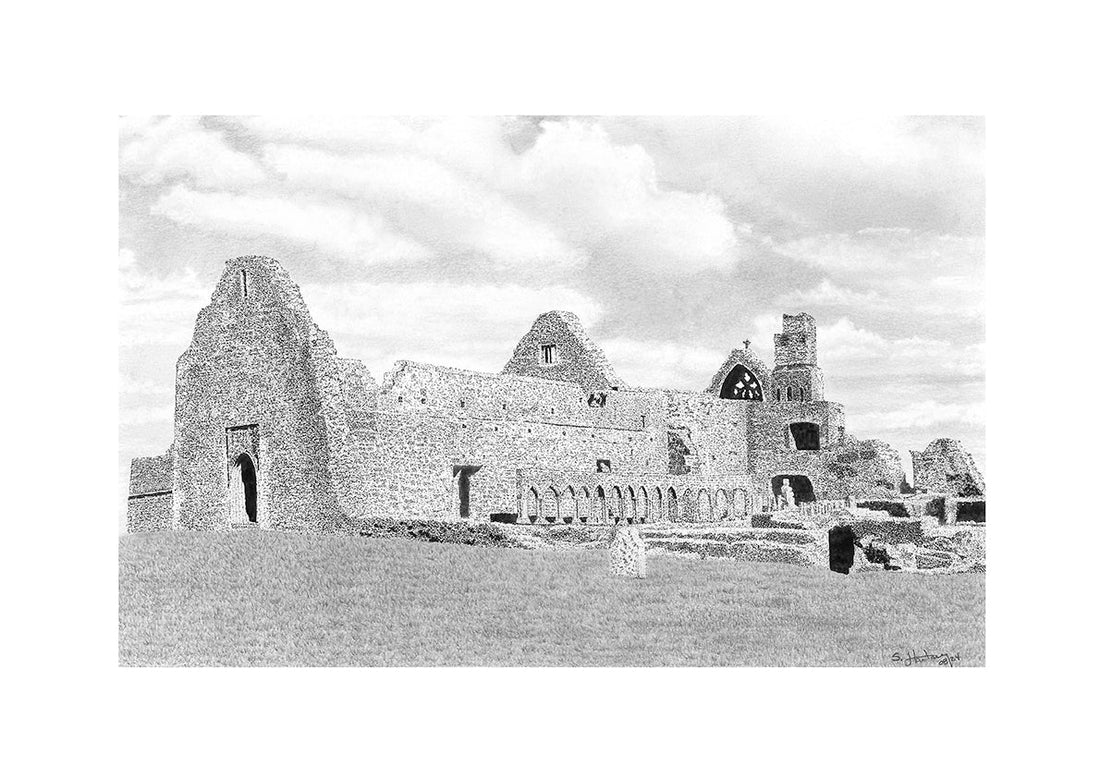
Abbeys Ghost - Clontuskert Abbey
Share
The History of Clontuskert Abbey
In the tranquil countryside of County Galway, Ireland, Clontuskert Abbey stands as aother example of Ireland's rich monastic heritage. The abbey, dedicated to St. Mary, has a history that stretches back to the early medieval period, offering a glimpse into the spiritual and architectural developments of its time.
Founding and Early History
Clontuskert Abbey was founded in the 8th century by St. Brendan of Clonfert, one of Ireland's most celebrated saints, known for his legendary voyage across the Atlantic. The abbey initially served as a small monastic community, where monks lived a life of prayer, study, and labor, typical of the early Irish monastic tradition.
During this period, Clontuskert, like many other monasteries in Ireland, played a crucial role in the preservation and dissemination of Christian knowledge and learning. Monks meticulously copied manuscripts, contributing to the rich tradition of Irish illuminated texts.
Medieval Flourishing
The abbey flourished during the 12th century under the patronage of the O'Kelly clan, local chieftains who endowed the monastery with lands and resources. This period saw the construction of many of the stone buildings that still partially stand today, including the beautiful Romanesque doorway, which remains one of the abbey's most distinctive features.
Clontuskert Abbey also became associated with the Cistercian Order in the 13th century, reflecting a broader trend of monastic reform across Europe. The Cistercians, known for their austere lifestyle and focus on manual labor, brought new vigor to the abbey, influencing its architecture and daily life.
Decline and Ruin
The abbey’s fortunes began to wane in the 16th century during the Dissolution of the Monasteries under Henry VIII. Like many religious institutions in Ireland, Clontuskert was seized by the Crown, and its lands were redistributed. The abbey fell into ruin over the following centuries, with its stones repurposed for local building projects.
Despite this decline, Clontuskert Abbey has remained a site of historical and cultural importance. Its ruins, particularly the intricately carved Romanesque doorway and the remnants of the cloister, continue to attract visitors interested in Ireland’s monastic past.
Modern Significance
Today, Clontuskert Abbey is a protected national monument, reflecting its importance as part of Ireland’s architectural and religious heritage. Efforts have been made to preserve the remaining structures, allowing future generations to explore this serene and evocative site.
The history of Clontuskert Abbey is a window into the broader narrative of Irish monasticism, showcasing the resilience and adaptability of these spiritual communities over centuries of change.
